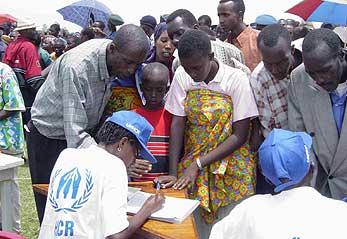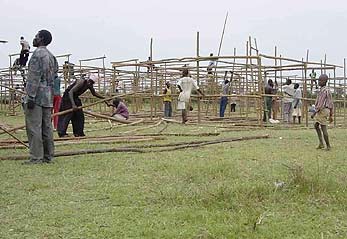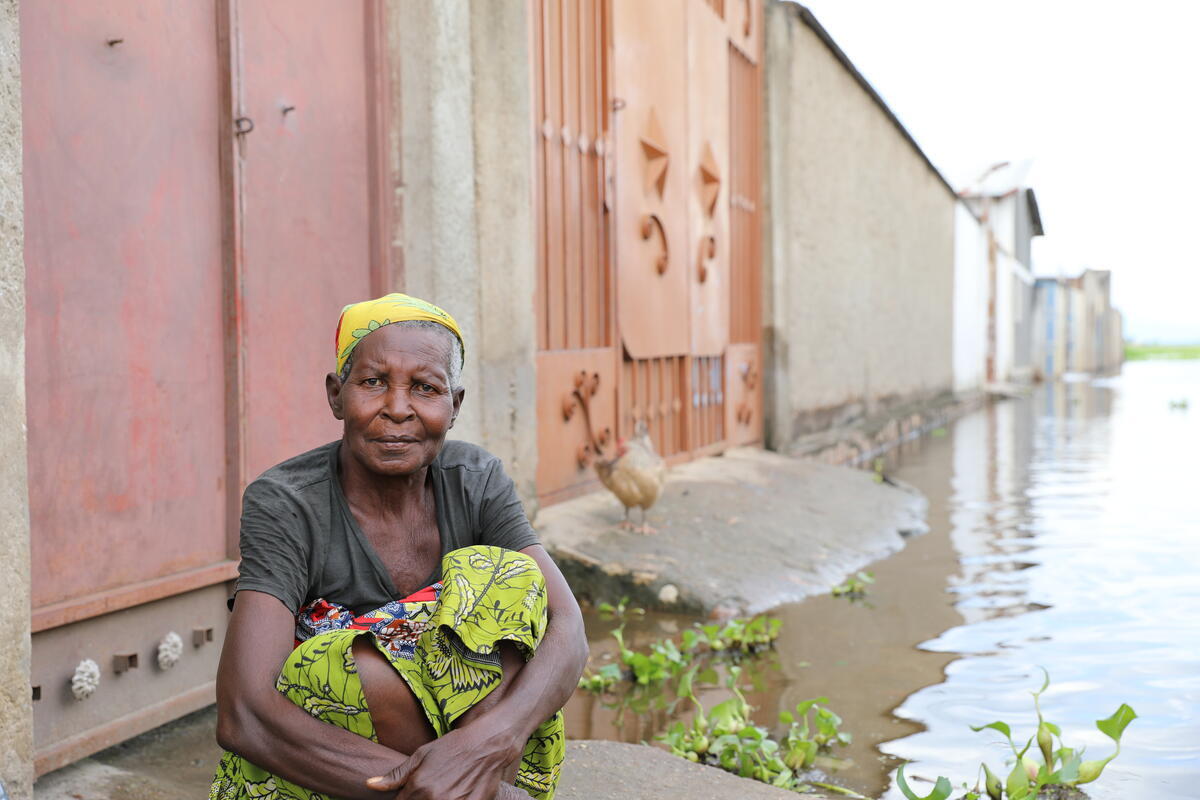Some 20,000 Congolese stranded at DRC - Burundi border return home
Some 20,000 Congolese stranded at DRC - Burundi border return home

BUJUMBURA, Burundi, October 21 (UNHCR) - An estimated 20,000 Congolese stranded over the weekend on the border of the Democratic Republic of the Congo (DRC) and western Burundi have returned home upon assurances that the situation in south Kivu has stabilised.
Congolese villagers first fled their town of Uvira in south Kivu, DRC, when the ruling rebel group, Congolese Rally for Democracy (RCD-Goma), lost control to the Mai-Mai militia on October 12. Thousands fled into western Burundi.
Almost a week later, RCD-Goma recaptured Uvira in overnight fighting on Friday, October 18. This renewed fighting sent thousands of villagers fleeing towards Burundi. By Saturday, some 20,000 had gathered at DRC's border with western Burundi, but were denied entry into Burundi.
On Sunday, the leader of RCD-Goma persuaded the Congolese that the situation in Uvira had stabilised. By that evening, the stranded group had returned home, apart from some 60 to 70 who remained at the border. This group was later allowed into Burundi.
Meanwhile, the UN refugee agency has continued to register a growing number of refugees at two temporary sites that were set up last week to shelter the fleeing Congolese. By the end of Sunday, the refugee agency had registered close to 10,000 refugees at both sites.
In Gatumba, near the Burundi capital of Bujumbura, nearly 5,200 refugees had been registered by Sunday while some 4,600 others were being assisted at the temporary site in Rugombo, in Cibitoke province in the north-west. An estimated 2,500 others around Rugombo - including some 2,000 in surrounding areas and 500 who arrived at the site on Sunday - were still awaiting registration.

At the two camps, UNHCR and its partner agencies are setting up basic structures to care for the refugees. In Gatumba, the refugee agency has completed the construction of 23 shelters. In Rugombo, 41 communal shelters are up. Each shelter can accommodate 80 people. However, the site at Rugombo is too small to accommodate all the refugees currently registered there. Another site is now being identified.
UNHCR has continued with its work to identify unaccompanied children. The majority of the 50 children identified so far have been reunited with their families. At the same time, social workers at the Rugombo site have identified about 30 teachers who have agreed to help set up programmes for the estimated 3,000 children currently there.
On Sunday afternoon, RCD-Goma leader Adolphe Onusumba and the governor of south Kivu visited the Congolese refugees at both sites to appeal for their return to Uvira. Refugees at Rugombo said they would like to see how the situation in Uvira develops before deciding whether or not to return. There were mixed reactions from refugees in Gatumba, some of whom showed a willingness to go home.








